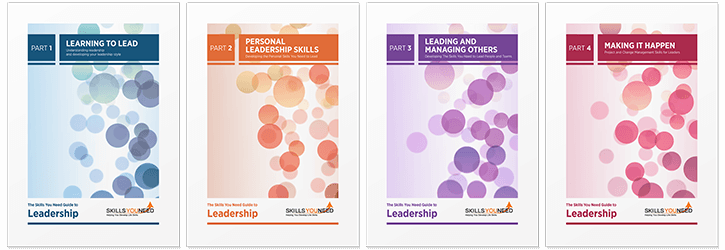How Technology Transformed Modern Business
See also: Customer Service SkillsWithin the past decade, technology has enabled businesses to change how they operate, making not only shopping for goods or services more convenient, but improving the lives of employees as well.
What are some of these advances, and how can your business, whether providing a service or selling a tangible product, take advantage of these concepts?

Tied to a Desk
Cash was once king, but plastic is now more popular.
For retailers especially, mobile point-of-sale machines are all that’s needed for a customer to pay their tab. A retailer isn’t tethered to a desk or counter with a cash register; you can walk around the store, explain the benefits of a particular item, and make the sale then and there. Restaurants have benefitted greatly, with the ability to take to the streets. A local sidewalk fair is much easier to attend, or even just selling samples in popular areas, directing customers to the brick-and-mortar location for more good eats. This extends to food trucks, making payment easy for a quick snack on the go.
Mobility for service-oriented businesses often presents in apps. While we will focus more on apps in a moment, let’s use a category to see how a banks, which mostly offer services, have improved customer convenience. With mobile banking apps, you can manage your finances on the go, depositing a check from anywhere your phone can connect to the internet. That means no more driving to the bank and standing in line. This convenience garners goodwill from customers.
There's an App for That
Apps provide a variety of services for mobile phone and tablet users, whether customer or employee.
On the employee front, there are apps that help log mileage and then report the numbers to the IRS, making the driving part of a job that much easier. Plus, this helps alleviate pressure on the HR and finance departments, extending the benefits beyond a single employee.
For clients, it again comes down to convenience. Starbucks allows you to order a custom drink and pick it up in-store. Target offers coupons, some based on your spending habits (and more on data and predictive analysis later). But how can you make something like event tickets more convenient for the end user of a ticket service?
Innovation can come in the form of a ticket selfie, a ticket that lives on a phone, with a photo of the buyer, meaning they don’t need to pull out their ID. Once again, convenience for the customer equates to goodwill, which in turn means they are likely to be a repeat customer.
Although you can hire a company to make an app - whether it’s meant for customers or an internal, employee-only app - it’s more than possible to do it yourself.
- If you wanted to create your own custom app that houses a client database, look to programs such as Filemaker.
- For service-oriented businesses, see if it’s possible to provide the service through the app - like the mobile banking example above.
- If you sell a product, the app may connect to the product, if it is part of the Internet of Things, or you could simply offer coupons.
Long-Distance Collaboration
Employees, vendors, or contractors around the world can easily collaborate on projects thanks to advancing technology and the cloud.
In-person meetings - and even job interviews - are no longer a necessity with VoIP video services such as Google Hangouts or Skype. All a business needs is a good internet connection to meet with a business partner in Japan at a moment’s notice (though a watch and knowledge of time zones helps, too). This extends to remote employees, as teleconferencing and telecommuting have greatly improved as internet technology has advanced, making their job easier.
Worried about work getting done when your employees are in a dozen countries spanning multiple time zones? Computer apps such as Asana or Trello can help track a project’s progress. A manager can meter out subtasks to team members in Asana, for example, with individual pieces checked off as they are completed.
As for the actual work, saving files to the cloud means easy collaboration. The employee can access the network drive, connected to the cloud server, from anywhere they have an internet connection. It’s as simple as downloading the file and getting to work. To illustrate how it works, imagine a company that makes videos for YouTube. A visual effects employee, working late in San Francisco, can save a video file to the cloud server. The Scottish sound-effects lead, just finishing a morning cup of coffee, can begin work as soon as the file uploads to the server and downloads to their computer.
A slight aside, saving files to a server can also mean easier recovery in case of either a hack or a corruption of save files. There are companies that specialize in server data recovery that enable you to bounce back from what would otherwise be a catastrophic event. This is similar to what the San Francisco Municipal Transport Agency did when a hacker locked them out of their system. Using a backup from their server, they were able to work around the hacker and eventually replace the files.
Data-based Prediction
Companies now use data for predictive analysis for anything from developing a new product to figuring out how to market to certain audiences.
For example, Wal-Mart used data to upgrade their website’s predictive searching, and saw a 10-15% increase in completed purchases. Macy’s uses real-time data, from supply and demand, to adjust prices of items, alleviating supply issues and maximizing profits. Even a decade ago, big data was nowhere near as sophisticated as today. While the majority of the convenience is for the company, it does pass on benefits to the consumer - like making it easier to shop for items you didn’t know you wanted!
Further Reading from Skills You Need
The Skills You Need Guide to Leadership eBooks
Learn more about the skills you need to be an effective leader.
Our eBooks are ideal for new and experienced leaders and are full of easy-to-follow practical information to help you to develop your leadership skills.
Technology has given businesses mobility, functional apps, and easy long-distance collaboration. These conveniences extend to not just employees, but the client or customer, drawing them back to businesses. Catering to employee’s needs and making their job easier helps retention.
Take advantage of technology, and your business will garner goodwill and grow.
About the Author
A former professional journalist covering crime, court and fire stories, Cole spends his free time freelance writing, playing video games, and slowly writing a crime novel.


